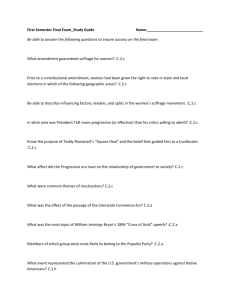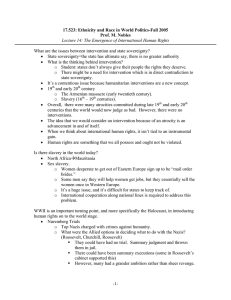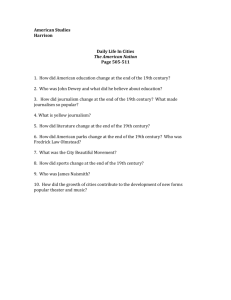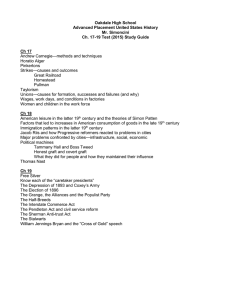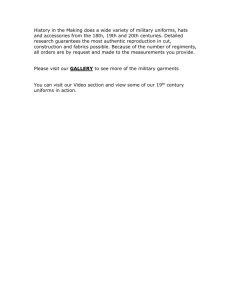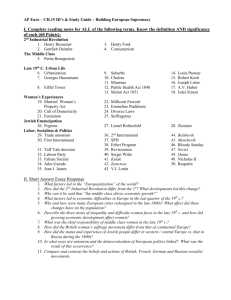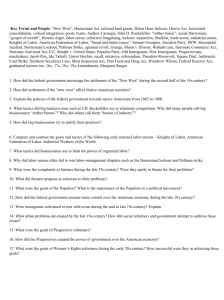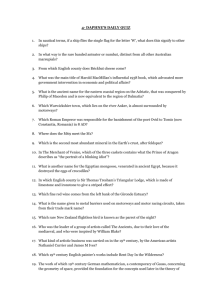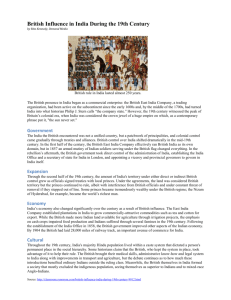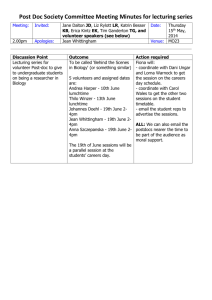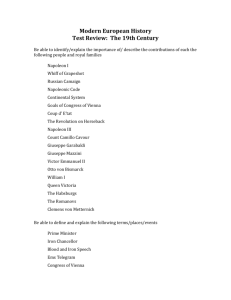Introduction to the Early 19th Century assignment (H)
advertisement
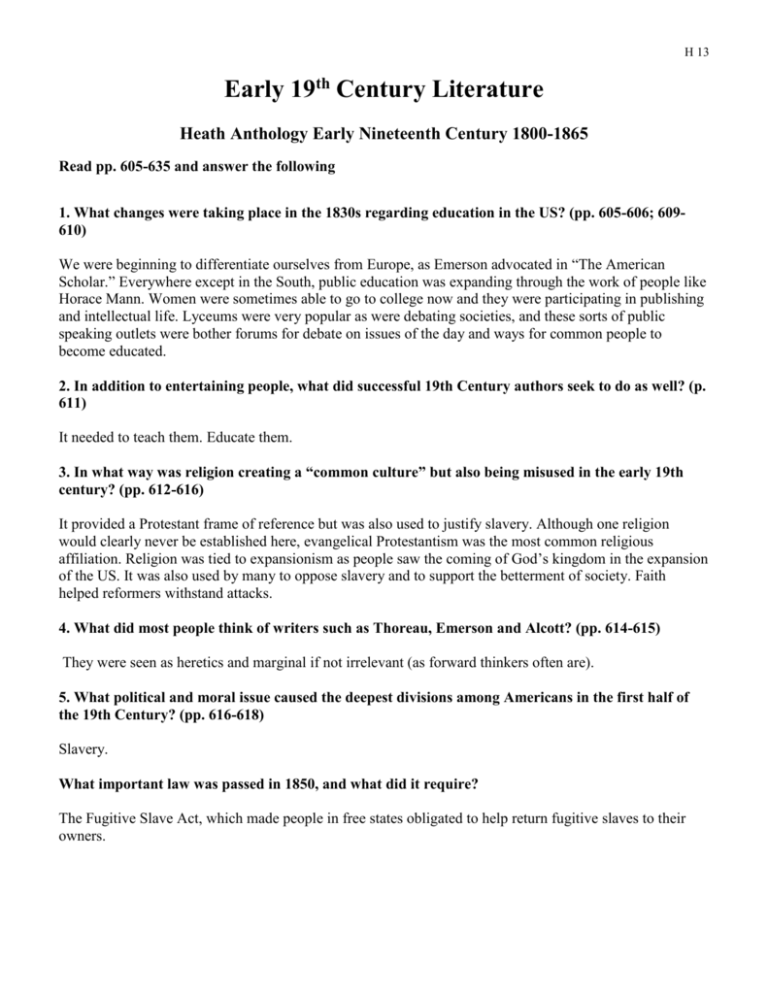
H 13 Early 19th Century Literature Heath Anthology Early Nineteenth Century 1800-1865 Read pp. 605-635 and answer the following 1. What changes were taking place in the 1830s regarding education in the US? (pp. 605-606; 609610) We were beginning to differentiate ourselves from Europe, as Emerson advocated in “The American Scholar.” Everywhere except in the South, public education was expanding through the work of people like Horace Mann. Women were sometimes able to go to college now and they were participating in publishing and intellectual life. Lyceums were very popular as were debating societies, and these sorts of public speaking outlets were bother forums for debate on issues of the day and ways for common people to become educated. 2. In addition to entertaining people, what did successful 19th Century authors seek to do as well? (p. 611) It needed to teach them. Educate them. 3. In what way was religion creating a “common culture” but also being misused in the early 19th century? (pp. 612-616) It provided a Protestant frame of reference but was also used to justify slavery. Although one religion would clearly never be established here, evangelical Protestantism was the most common religious affiliation. Religion was tied to expansionism as people saw the coming of God’s kingdom in the expansion of the US. It was also used by many to oppose slavery and to support the betterment of society. Faith helped reformers withstand attacks. 4. What did most people think of writers such as Thoreau, Emerson and Alcott? (pp. 614-615) They were seen as heretics and marginal if not irrelevant (as forward thinkers often are). 5. What political and moral issue caused the deepest divisions among Americans in the first half of the 19th Century? (pp. 616-618) Slavery. What important law was passed in 1850, and what did it require? The Fugitive Slave Act, which made people in free states obligated to help return fugitive slaves to their owners. H 13 6. What was happening to the roles of women in American society at this time? (pp. 621-624 & 628) Women’s opportunities for education and factory work increased. Middle class women had more free time to read fiction and be social reformers. BUT—their ability to find meaningful work apart from childrearing and their ability to own property or control their own bodies had decreased since the revolution. Basically, if a woman married, she had zero rights or independence. What did many believe “excessive thinking” would do to women? Interfere with a woman’s reproductive capacities. 7. How had the economic base of the US begun to shift by the mid-19th Century? (p. 628) From agriculture to industry – farmers and artisans were no longer the rule, and the artisan was replaced by the factory “hand,” who had little or nothing to sell except his labor for a wage and who could not take pride in his product. 8. What changes were taking place in the socio-economic structure of the US? (629) Economic inequality increased rapidly. Class structure was now based upon wealth, and there was much more class division than in the 1700s. 9. What was the biggest innovation in transportation? (p. 630) The locomotive 10. What was emphasized in the literary movement known as “Romanticism”? (p. 632) Openness to nature, feeling, individuality. 11. What tension defined the US during the first half of the 19th Century? (p. 633) The tension between the mission of a democratic community and the growing ideology of individual advancement.
